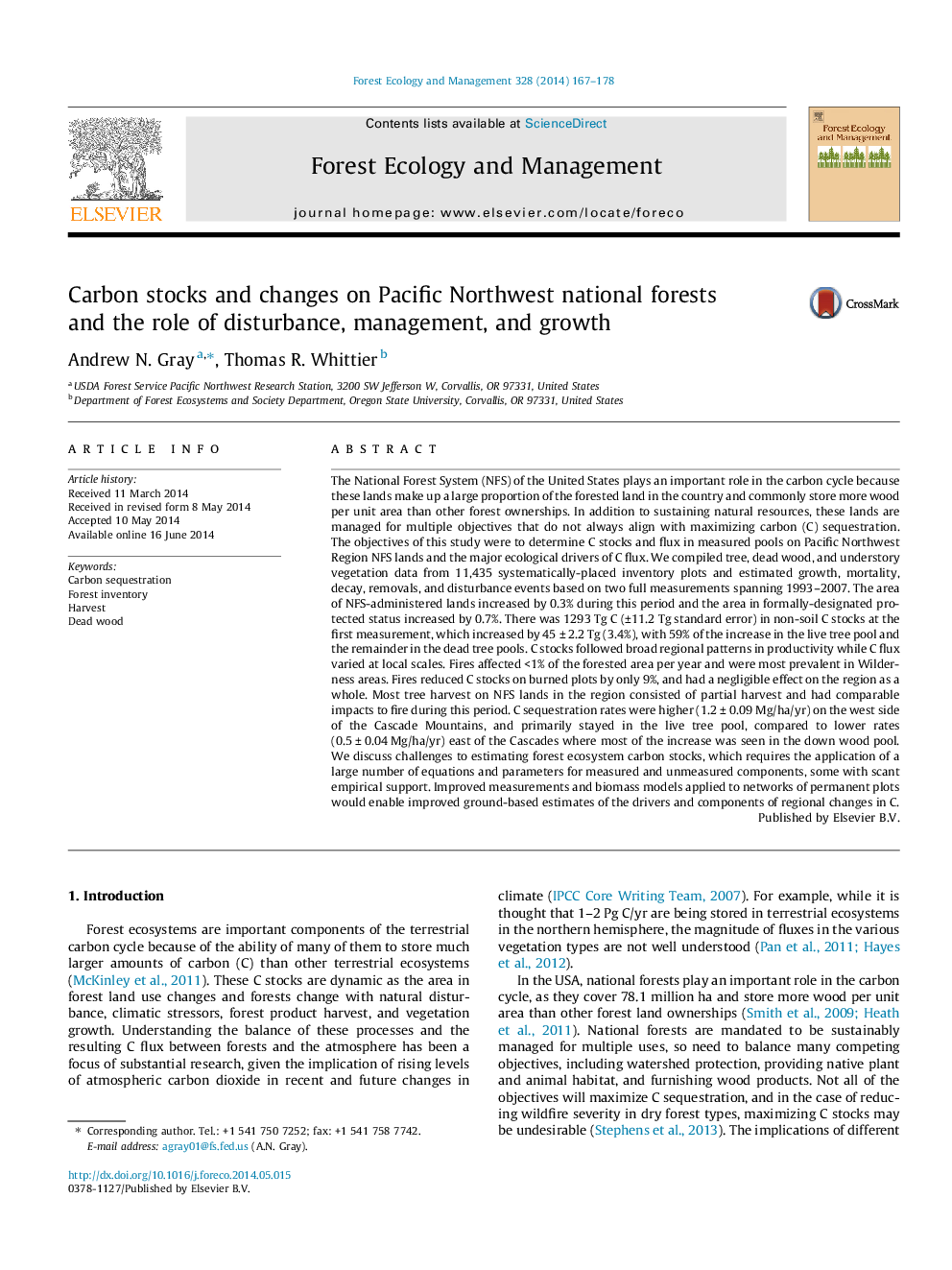| کد مقاله | کد نشریه | سال انتشار | مقاله انگلیسی | نسخه تمام متن |
|---|---|---|---|---|
| 86516 | 159194 | 2014 | 12 صفحه PDF | دانلود رایگان |
• We assess causes of carbon flux on 10 million ha with extensive field data.
• Trees, dead wood, and understory vegetation were measured on 11,435 plots.
• Non-soil carbon stocks increased by 45 ± 2.2 Tg (3.4%) over 7 years (0.77 ± 0.002 Mg/ha/yr).
• Sixty percent of the increased C was in live trees, the rest was in dead wood.
• Wildfire affected <1% of the area/yr, and most impacts to C stocks were in Wilderness.
The National Forest System (NFS) of the United States plays an important role in the carbon cycle because these lands make up a large proportion of the forested land in the country and commonly store more wood per unit area than other forest ownerships. In addition to sustaining natural resources, these lands are managed for multiple objectives that do not always align with maximizing carbon (C) sequestration. The objectives of this study were to determine C stocks and flux in measured pools on Pacific Northwest Region NFS lands and the major ecological drivers of C flux. We compiled tree, dead wood, and understory vegetation data from 11,435 systematically-placed inventory plots and estimated growth, mortality, decay, removals, and disturbance events based on two full measurements spanning 1993–2007. The area of NFS-administered lands increased by 0.3% during this period and the area in formally-designated protected status increased by 0.7%. There was 1293 Tg C (±11.2 Tg standard error) in non-soil C stocks at the first measurement, which increased by 45 ± 2.2 Tg (3.4%), with 59% of the increase in the live tree pool and the remainder in the dead tree pools. C stocks followed broad regional patterns in productivity while C flux varied at local scales. Fires affected <1% of the forested area per year and were most prevalent in Wilderness areas. Fires reduced C stocks on burned plots by only 9%, and had a negligible effect on the region as a whole. Most tree harvest on NFS lands in the region consisted of partial harvest and had comparable impacts to fire during this period. C sequestration rates were higher (1.2 ± 0.09 Mg/ha/yr) on the west side of the Cascade Mountains, and primarily stayed in the live tree pool, compared to lower rates (0.5 ± 0.04 Mg/ha/yr) east of the Cascades where most of the increase was seen in the down wood pool. We discuss challenges to estimating forest ecosystem carbon stocks, which requires the application of a large number of equations and parameters for measured and unmeasured components, some with scant empirical support. Improved measurements and biomass models applied to networks of permanent plots would enable improved ground-based estimates of the drivers and components of regional changes in C.
Journal: Forest Ecology and Management - Volume 328, 15 September 2014, Pages 167–178
